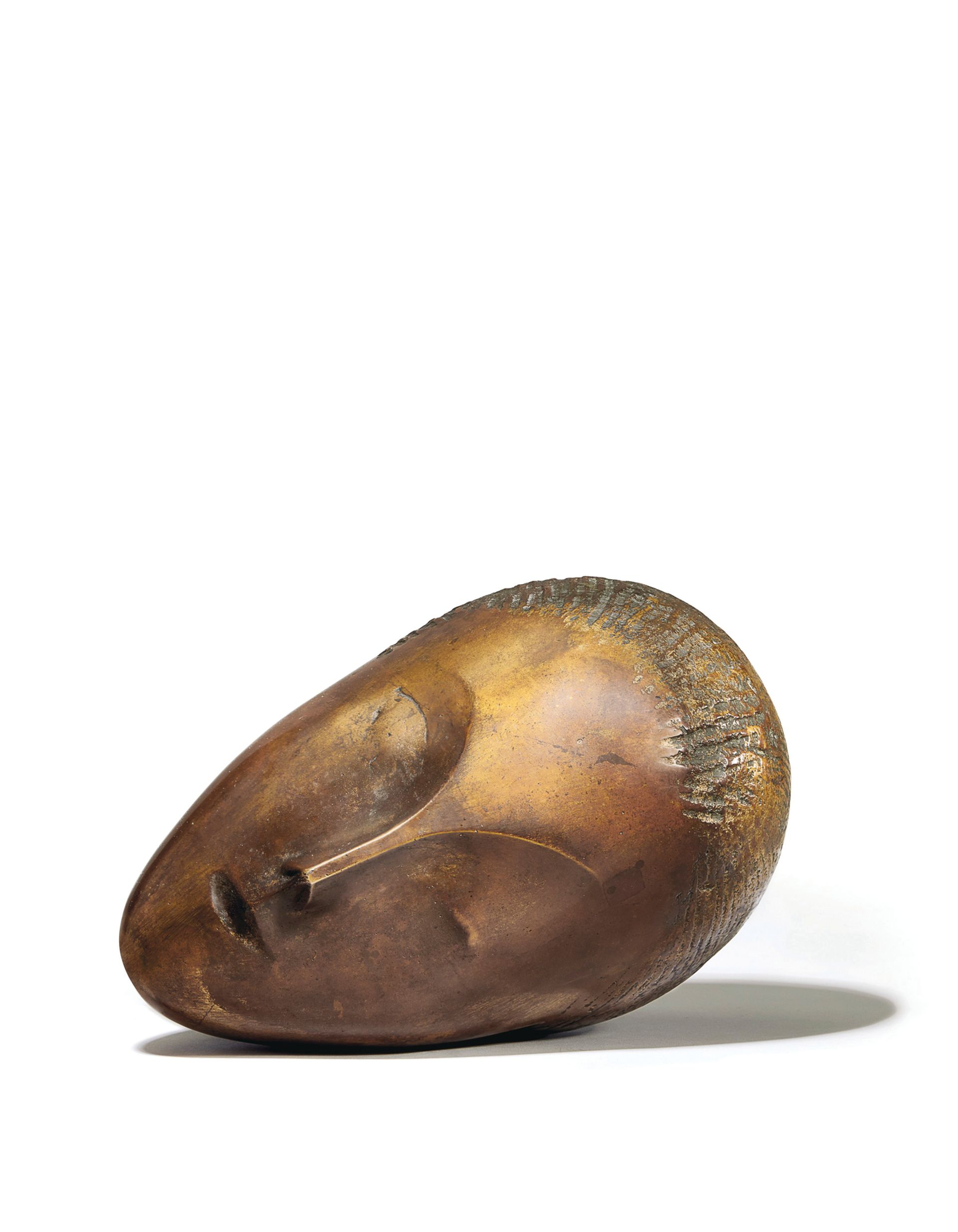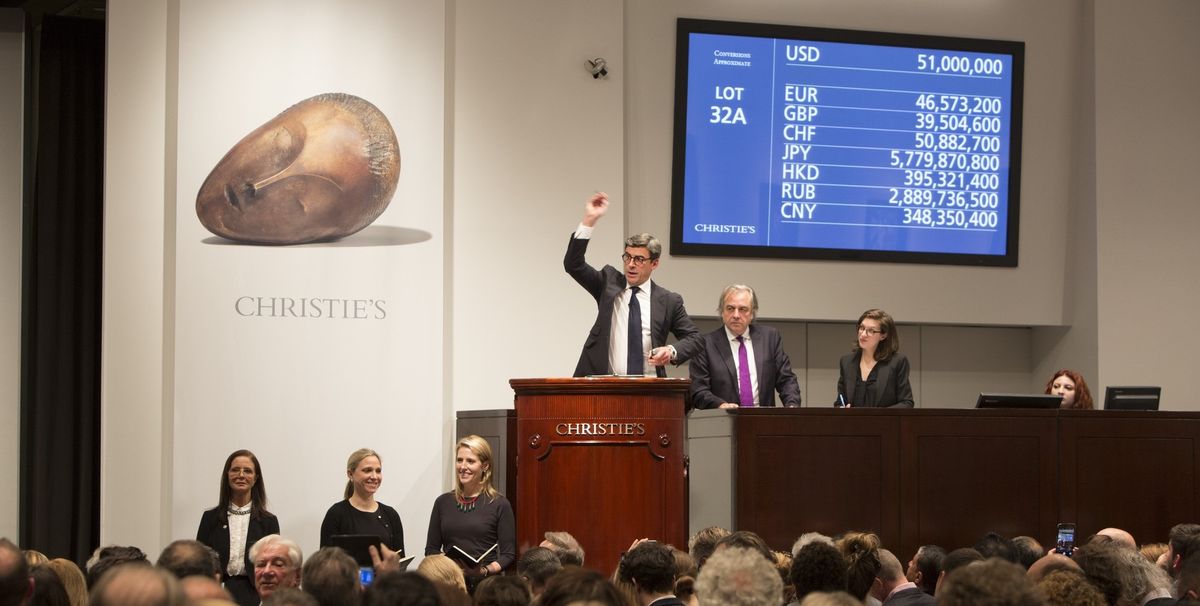Dinging the opening bell on the spring auctions in New York, the Impressionist and Modern evening sale at Christie's New York on 15 May rung up a total of $289,178,500 with fees, approaching the higher end of the pre-sale estimate ($207m-$307m)—and, the house said, its best result in the category in seven years.
Three lots made up 54% of the evening's total. The night's biggest success was Brancusi’s La muse endormie (cast by 1913, based on a marble sculpture of 1909-10), "a quest for many years" by the Christie's Paris-based specialist Anika Guntrum, the auction house's recently promoted CEO Guillaume Cerutti noted after the sale. Bidding on the bronze sculpture, estimated to fetch at least $25m, rose steadily over the course of 10 minutes to a final hammer price of $51m, or $57.4m with fees—a new record for the artist—to a buyer in the room.
Muse endormie is the first in the artist’s series of ‘egg’ sculptures, a significant step in his progression toward an abstracted sublime. Six versions in bronze exist; Brancusi considered each unique, and this was one of two that remained in private hands (others are held in the collections of the Centre Pompidou, Paris, the Metropolitan Museum of Art, New York and the Art Institute of Chicago).
Apart from a few dramatic moments during the sales of the Brancusi and a storied Picasso portrait of Dora Maar—Femme assise, robe bleue, 1939 (est $35-$50m; sold for $40m, or $45m with fees to a new client on the phone with Christie’s Asia head Rebecca Wei)—the mood in the room lacked crackle. This did not mean the electrons were not firing, in the view of New York dealer Emmanuel Di Donna, who deemed bidding "deep but considered at the top level". Aside from what he described as a "disappointing" result of $10m ($11.4m with fees, sold on a single bid) for Fernand Léger’s Nature more aux elements mécaniques, "they are prices I would expect privately for those pieces". Bidding was 42% American and 23% Asian by lot, suggesting that for all the house’s emphasis on building its Asian clientele, interest remains confined to a small number of brand names.

“It was a great night for Cubism”, said the department’s head of sale, Jessica Fertig, pointing to above estimate results for works by Georges Braque (Le Guéridon, 1911, est $4m-$6m, sold for $10.1m with fees) and a somewhat related work by Wassily Kandinsky (Oben und links, 1925, est $5m-$7m, sold for $8.3m with fees).
Material on the Modern end generally sold well, but a wide gulf opened between the top lots and the rest. The question remains: what of the non-masterpiece material not consigned as part of a package deal? Compared with the 1 March evening sale in London, which achieved 92% sell-through by lot, Christie’s New York managed just 78%, with 12 passed lots.
The contrast could not be starker than in a pair of Impressionist views of the same road in Louveciennes, one by Monet (est $4m-6m) and one by Pissarro (est $1.5m-2.5m), both circa 1870 and hailing from the same private collection. The dusky Monet nosed inside its estimate with a hammer price of $4.7m; the blue-sky Pissarro failed to sell. Many other Impressionist works struggled to breach their estimates. Is there room for material valued at under $5m in such a market? Is it wise to consign sans guarantee?
Cerutti, who manned a phone on behalf of a client during the sale of the Kandinsky in Monday night's auction, seemed to confirm the bias toward top-flight material that is fresh to the market. He noted that masterpieces and distinguished collections—here, those of the Cleveland Clinic, courtesy Mrs Sydell Miller, and Hunt Henderson—formed the two pillars of the sale. "It's still a selective market", he says. "It's more about the density of high-value lots."


